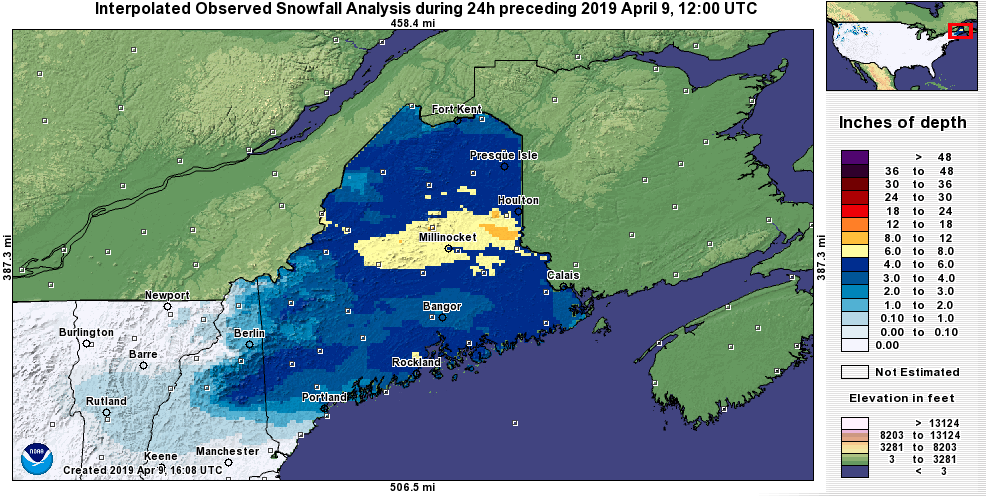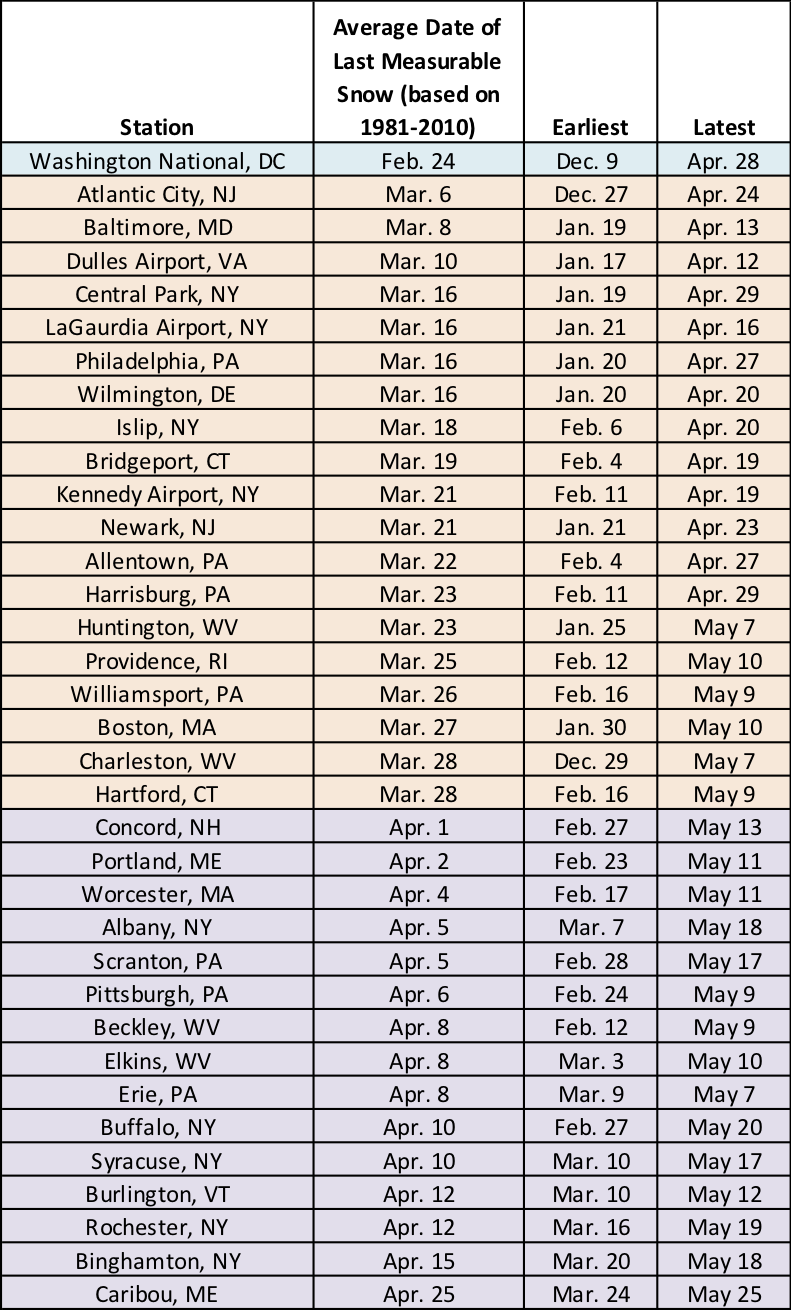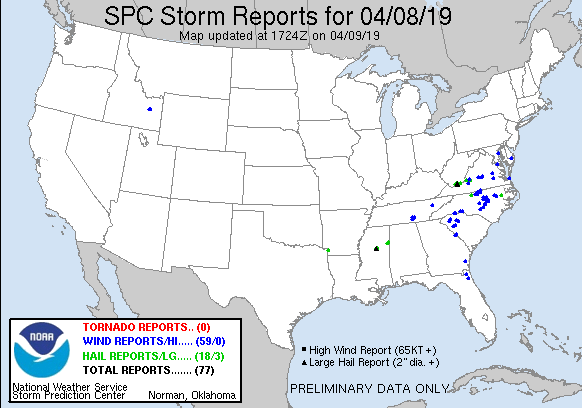The Many Moods of Spring
Spring can be a temperamental season, possessing some of the attributes of both winter and summer. For instance, yesterday (April 8) frozen precipitation fell in both the northern and southern reaches of the Northeast region, but in northern Maine it was in the form of snow and in southern West Virginia it was in the form of hail.
The northern half of Maine generally picked up 4 to 8 inches of snow from yesterday’s storm. Click to enlarge. Credit: NOAA’s NOHRSC
Parts of Maine accumulated up to 8 inches of snow from yesterday’s storm. However, it’s not unusual for Maine, particularly northern areas, to have measurable snow (0.1 inches or greater) in April. On average, Caribou doesn’t see its last snow of the season until April 25 and it has received measurable snow as late as May 25.
The average, earliest, and latest dates of the last measurable snow during spring at the region’s major climate sites.
What about other parts of the Northeast? Well, Washington National, D.C., usually has its last measurable snowfall at the end of meteorological winter, with an average date of February 24. A little over half of the region’s major climate sites, including the major I-95 cities, have their last measurable snow in March. For roughly the other half, including many of the New York and New England sites, that date falls in April.
Severe weather reports from April 8, including the black triangle in southern West Virginia indicating large hail. Click to enlarge. Credit: NOAA’s Storm Prediction Center.
Severe weather can happen any time of the year, but in the Northeast the probability of severe weather (tornado, hail, or thunderstorm wind) is higher from late March through late September, with a peak in June and July. So while it’s not unusual that southern West Virginia saw hail in April, the size was quite unusual! A 3-inch hailstone fell near Princeton, WV. Data from NOAA’s NCEI shows this is the first time a hailstone of that size has fallen in West Virginia in April and only the seventh time since 1950 that a hailstone of that size or larger has been reported in the state. For reference, the state’s largest hailstone was 4.50 inches.



